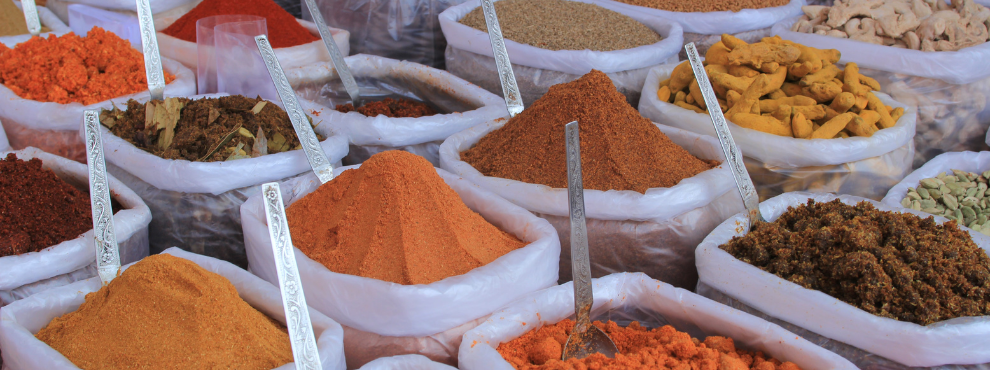Study on spices and herbs: big difference between growing countries in terms of environmental and social impact
Joint press release by the Centre for Sustainable Leadership (ZNU) and the Adalbert Raps Foundation.

How sustainable are spices and herbs? The Centre for Sustainable Leadership (ZNU) at Witten/Herdecke University has now published a study on this question, which was funded by the Adalbert Raps Foundation. The key finding is that there are major differences between the most important cultivation countries; companies must address the specific challenges in order to bring about change and cannot rely on labels and seals. There is more potential in working with direct and indirect suppliers in the supply chain.
The Supply Chain Act, the obligation to report on sustainability or the critical discussions in the media and society - there are many reasons why companies are looking at sustainable business practices. However, spices and herbs are rarely considered in this debate. There is also a lack of scientific data on the specific effects of individual spices and herbs.
Developing solutions for the sustainability challenges of spices and herbs
The aim of the study was therefore to quantify the main sustainability challenges of spices and herbs for the most important growing countries and to identify possible solutions. The analysis includes country-specific impacts on water scarcity, the use of critical pesticides and fertilisers as well as human rights risks. These environmental and social impacts were already identified as the key sustainability challenges of spices and herbs in an earlier ZNU study. An overview of the scientific research literature is also provided to show companies what influence they can exert on their supply chains.
"The results show that there are major differences between the various growing countries," says Julius Wenzig, author of the study from Witten/Herdecke University. "While pepper samples from Vietnam and Brazil, for example, show very high levels of critical pesticides, samples from India and Sri Lanka contain significantly fewer."
Different spices pose different challenges
Challenges can also be identified that depend on spices and herbs. For example, the data shows that chilli and paprika have a relatively large impact on local water scarcity and ecosystems, while the cultivation of ginger and turmeric has less of an impact. The human rights risks associated with the cultivation of parsley are also relatively low, while they are higher for turmeric and ginger. Based on this data, companies can carry out a risk assessment and prioritise individual spices and herbs as well as countries of cultivation. Ideally, specific data should be collected and analysed in order to derive concrete recommendations for action for producing or trading companies.
The literature review shows that, on average, sustainability labels and seals do not have a significant impact on the ecological, economic and social situation of producers in the Global South. Too often, inefficiencies, abuse of power and mismanagement occur in agricultural producer organisations in developing countries, with the result that the premiums for certified goods sometimes do not reach the farms. The direct influence of companies on their supply chain is more promising. "Existing studies see great potential for more sustainable supply chains in direct cooperation between different companies in a supply chain. In this way, product-, location- and company-specific challenges in the spice industry can be tackled together," says Julius Wenzig. Multi-stakeholder initiatives such as the Sustainable Spices Initiative or the ZNU partner network can also be effective in supporting cooperation between companies, exchanging experiences and pooling activities.
Data from the study
The data in the study is based on various sources. The International Trade Centre's Trade Map was used to analyse the most important countries of cultivation. The detected pesticides were analysed in a dashboard by iComplai UG based on data from the European Food Safety Authority (EFSA). In collaboration with Lars Neumeister, an independent pesticide expert, the pesticides were assessed using the Toxic Load Indicator (TLI). Data from Farooqi et al. (2005) was used to record fertiliser requirements. The water footprint was calculated on the basis of consumption data from Mekonnen & Hoekstra (2011) and the AWARE (Available WAter REmaining) method from Boulay et al. (2018) was used to assess water scarcity. The human rights risks were taken directly from the Social Hotspot Database (SHDB). The scores are a relative assessment of the highest values compared to the lowest values. Therefore, no statements can be made about absolute impacts. The literature research is based on German and English-language literature, primarily from scientific journals and grey literature.
Download the study
To the project page
Contact person

Svenja Malessa
Press Officer
Administration | Communication & Marketing
Alfred-Herrhausen-Straße 48
58455 Witten
Room number: 2.F05